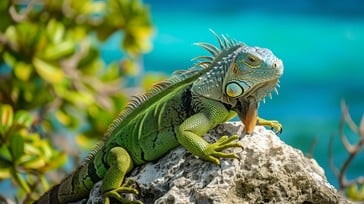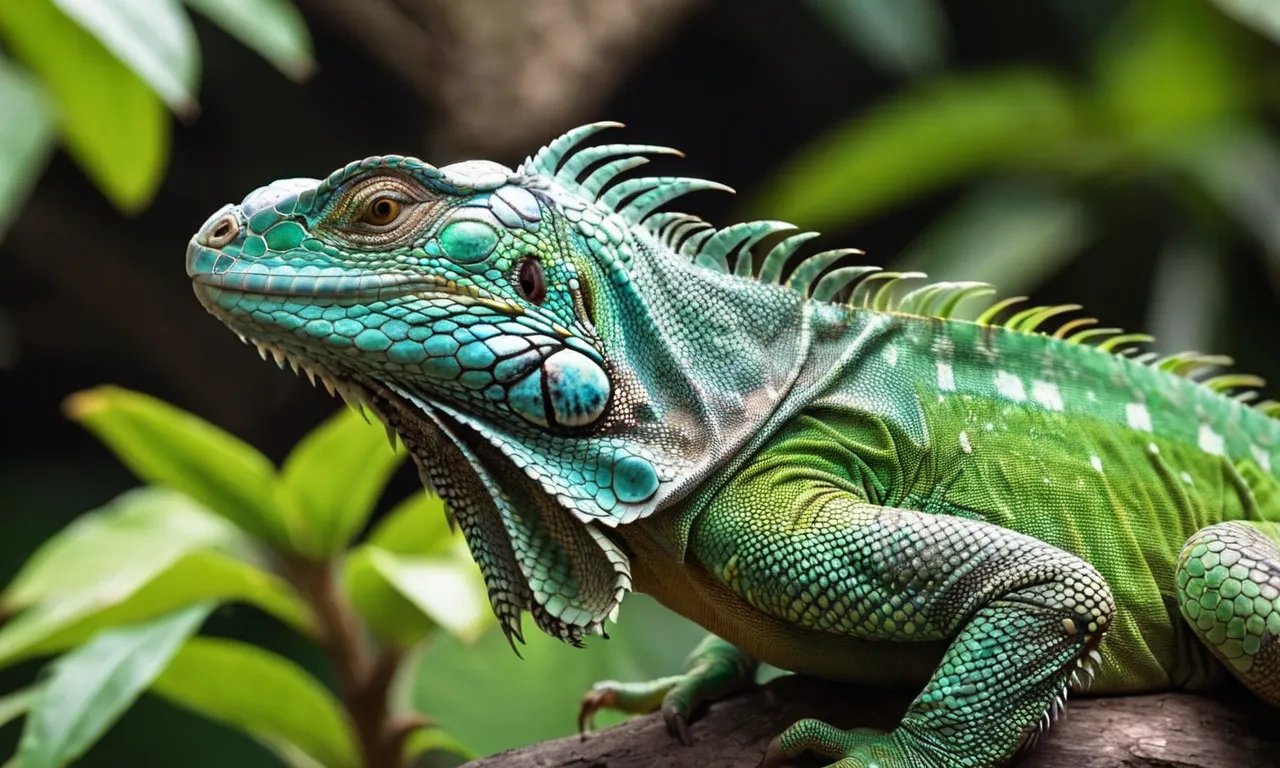The Fascinating Iguana: Nature’s Colorful Marvel
Iguanas are captivating reptiles that have become popular pets and intriguing subjects for wildlife enthusiasts. With their vibrant colors, unique behaviors, and fascinating adaptations, iguanas are truly remarkable creatures. Let’s explore some interesting facts about these lizards that showcase their beauty and uniqueness!

1. Diverse Species
Iguanas belong to the family Iguanidae, which includes several species, with the green iguana being the most well-known. Other notable species include the lesser Antillean iguana, the marine iguana, and the black iguana. Each species has its own unique characteristics and adaptations to thrive in different environments.
Fun Fact:
Marine iguanas, found in the Galápagos Islands, are the only iguanas that have adapted to a marine lifestyle, diving into the ocean to feed on algae!
2. Impressive Size
Iguanas are among the largest lizards in the world. The green iguana can grow up to 6.5 feet long, including its long tail. Despite their size, they are primarily herbivorous, feeding on leaves, flowers, and fruits. Their strong jaws and sharp teeth are well-adapted for chewing tough plant material.

3. Unique Coloration
Iguanas are known for their striking colors, which can range from bright green to muted shades of brown and gray. Their color can change based on their mood, temperature, and environment. For instance, iguanas may appear brighter when they are excited or basking in the sun, while they may darken when stressed or feeling threatened.
Color Changes:
These color variations help them regulate their body temperature and camouflage themselves in their surroundings, protecting them from predators.
4. Social Behavior
While iguanas are often seen alone, they can exhibit social behaviors, particularly during the mating season. Males are known to establish territories and engage in displays of dominance, such as head-bobbing and pushing against each other. These behaviors help maintain order in their social hierarchy.
Communication:
Iguanas communicate through body language and vocalizations, using hisses, growls, and even tail whips to express their feelings or warn others.
5. Conservation Status
Many iguana species face threats due to habitat loss, climate change, and the pet trade. Conservation efforts are essential to protect these reptiles and their natural habitats. Organizations are working to rehabilitate injured iguanas, protect nesting sites, and promote awareness about the importance of preserving these fascinating creatures.
How You Can Help:
Support local conservation efforts and avoid purchasing iguanas from illegal sources. Educating others about the importance of wildlife conservation can also make a difference.
Conclusion
Iguanas are remarkable reptiles that offer a glimpse into the diversity of life on our planet. From their vibrant colors to their intriguing behaviors, these lizards are a testament to the beauty of nature. By learning more about iguanas and supporting conservation efforts, we can help ensure their survival for generations to come.
Have you ever encountered an iguana in the wild or as a pet? Share your experiences and thoughts about these fascinating creatures in the comments below!
